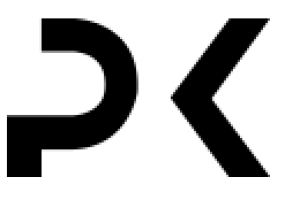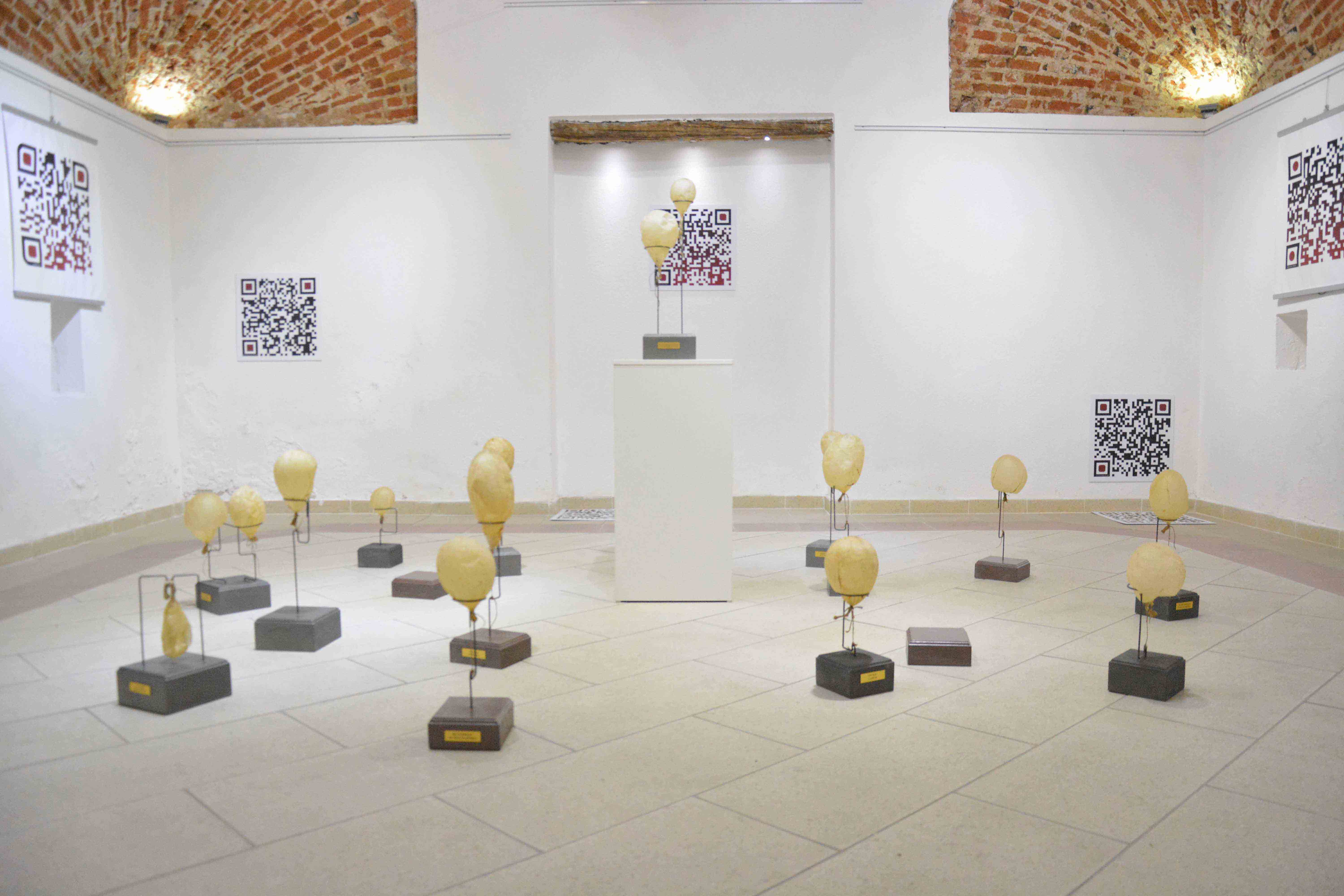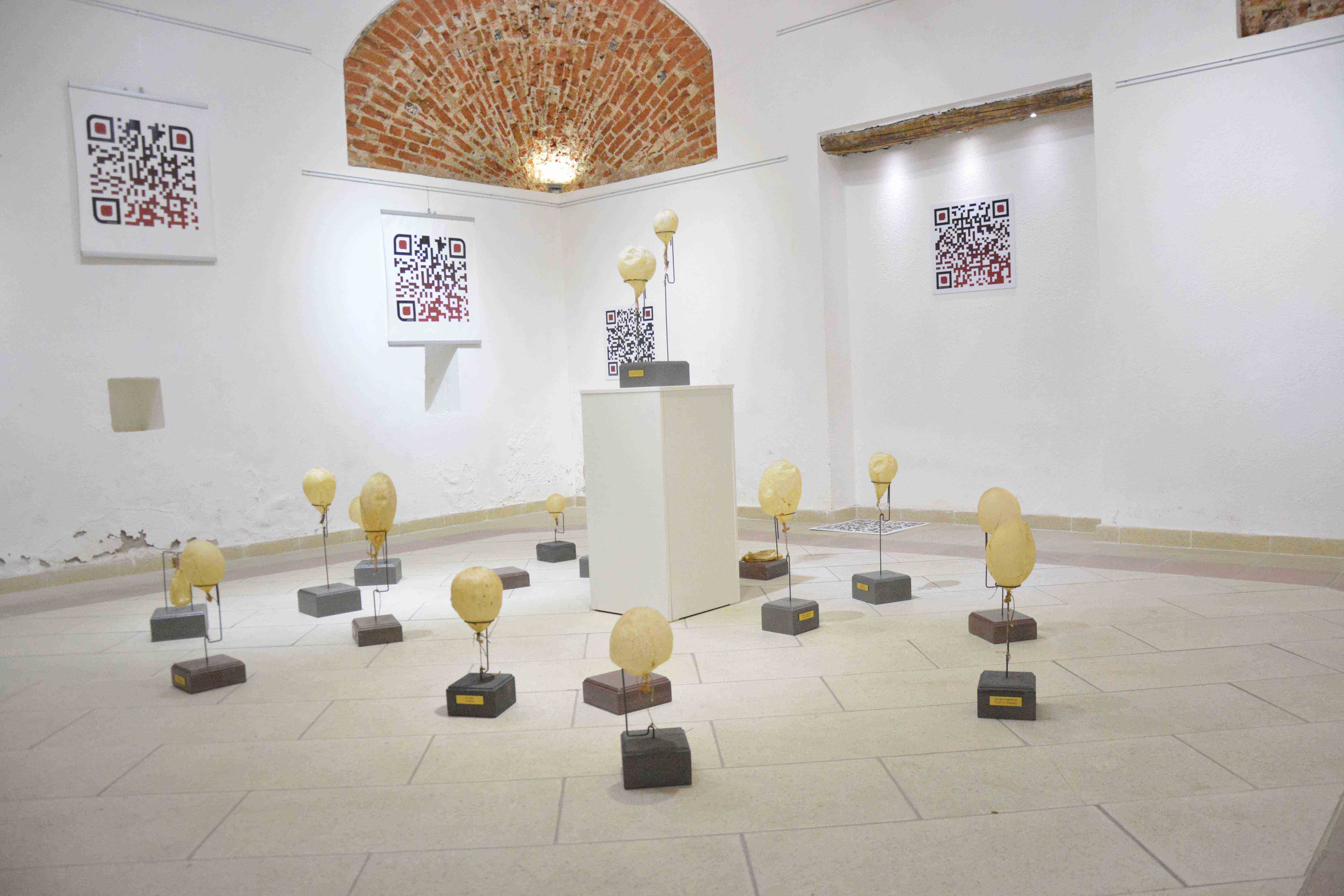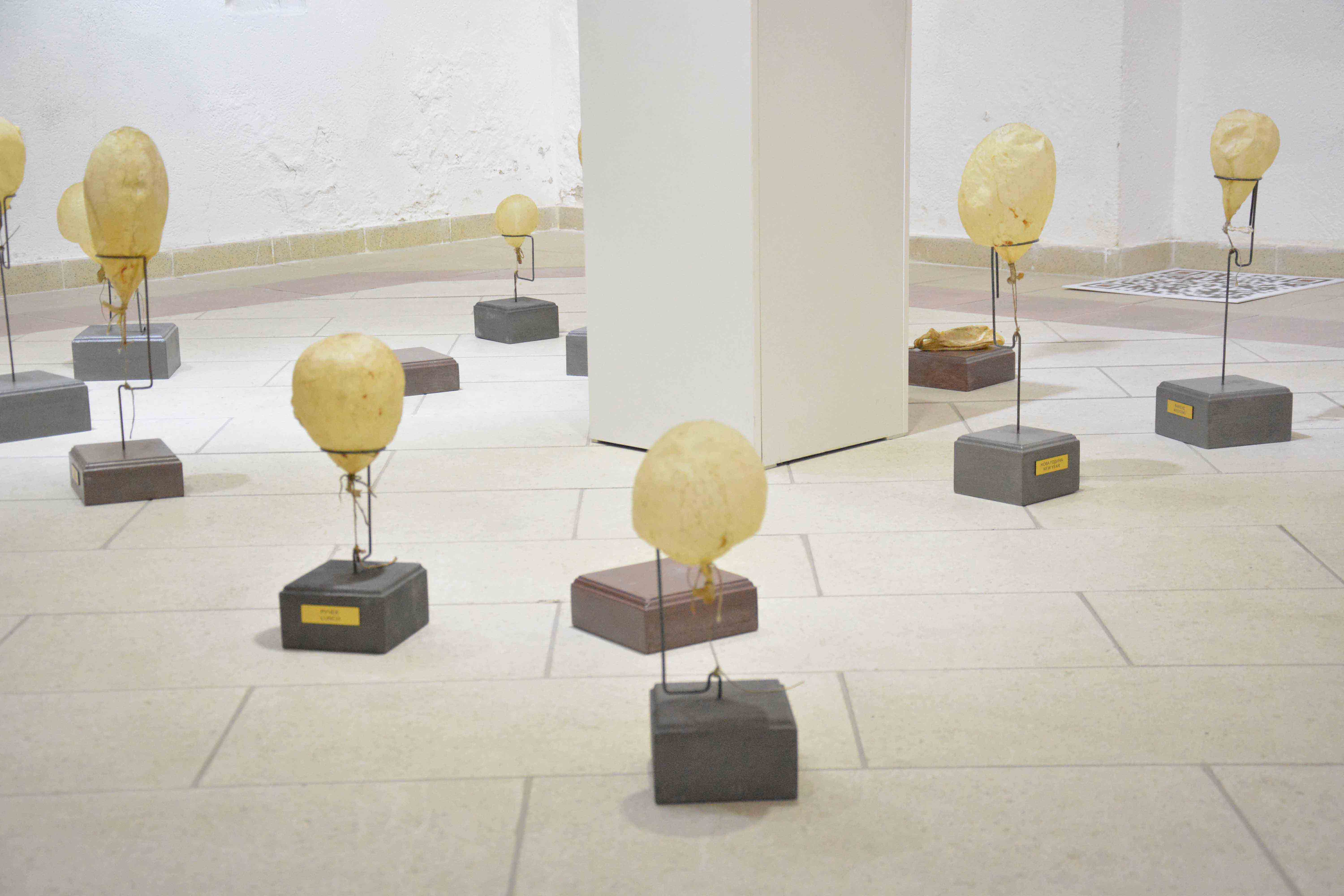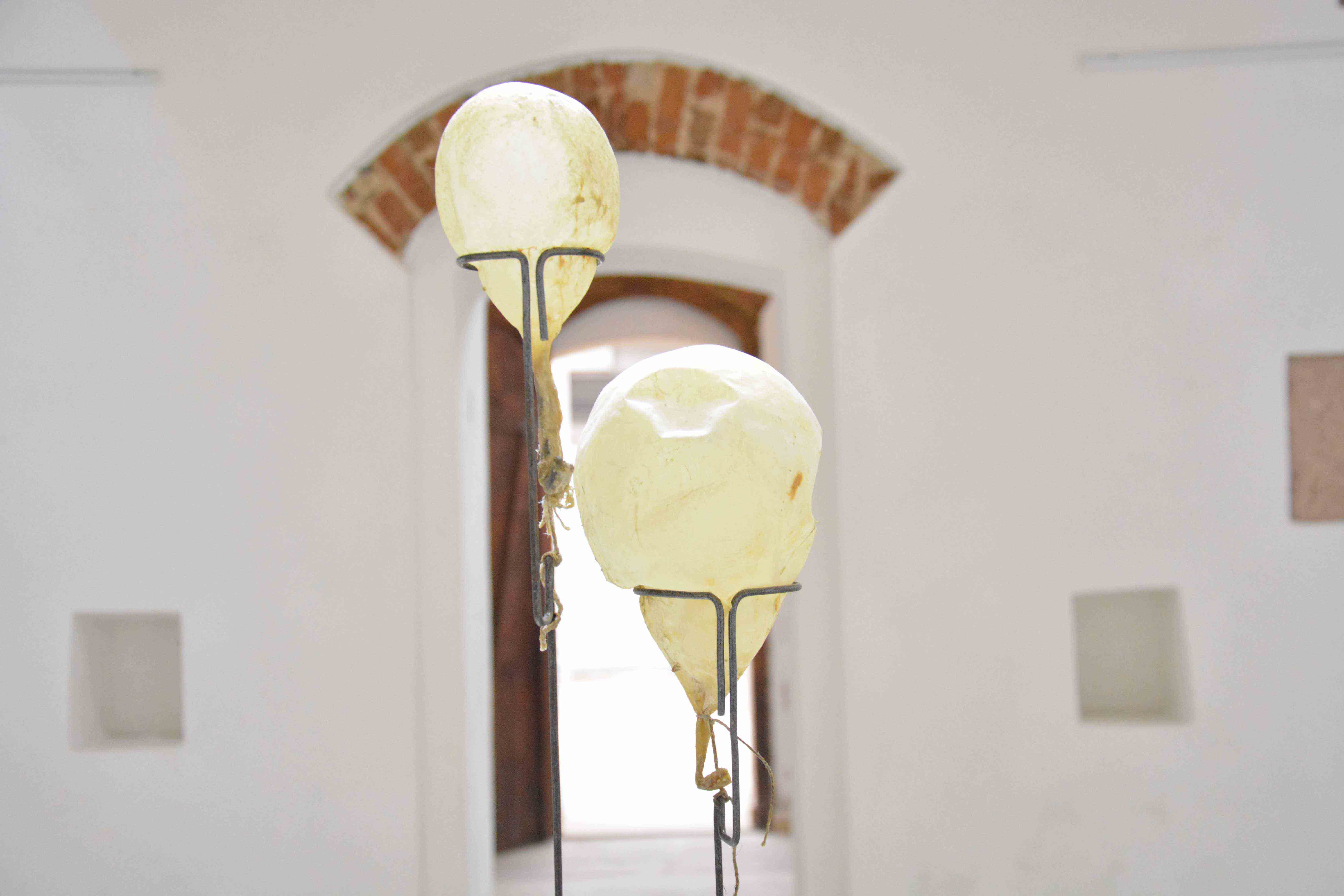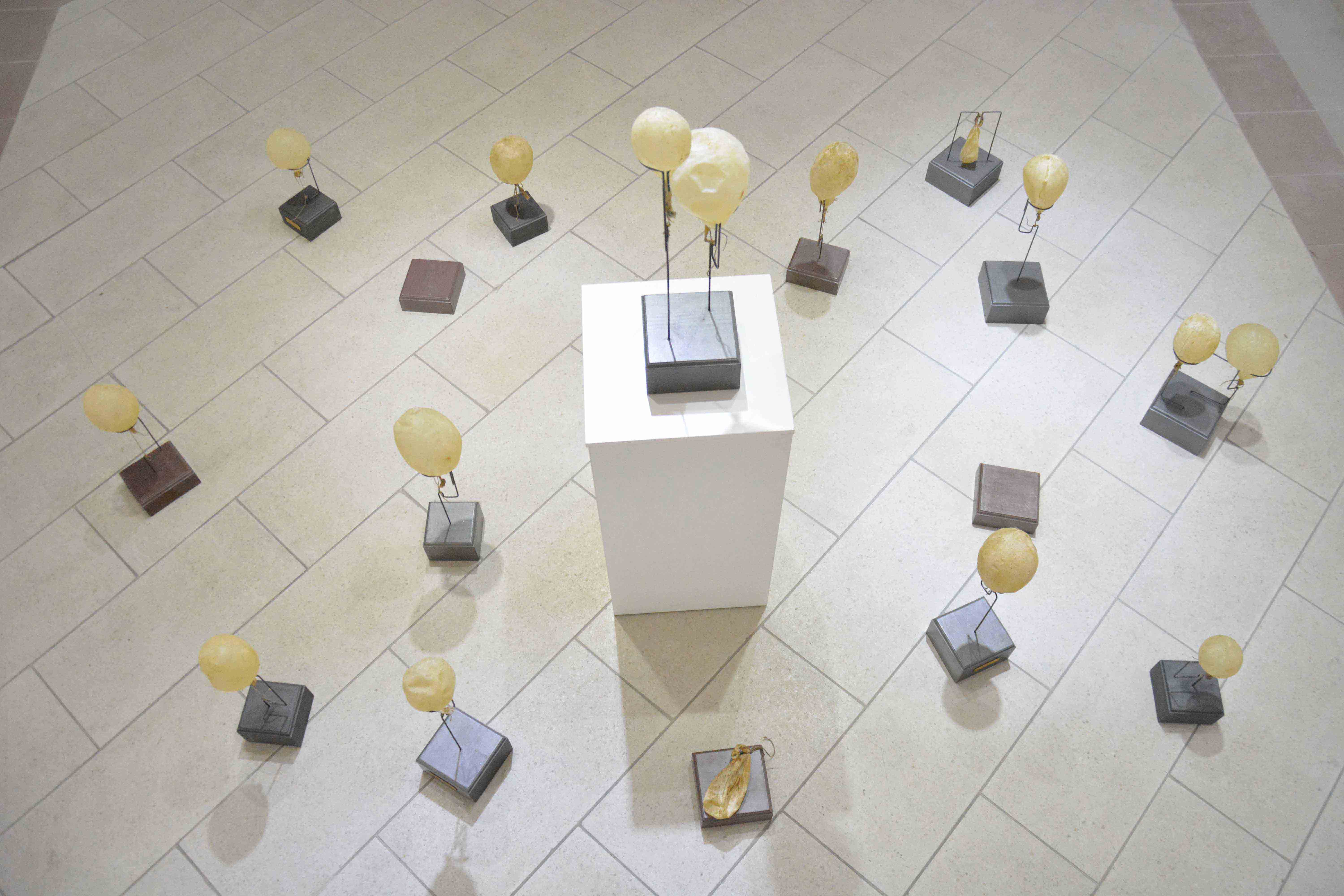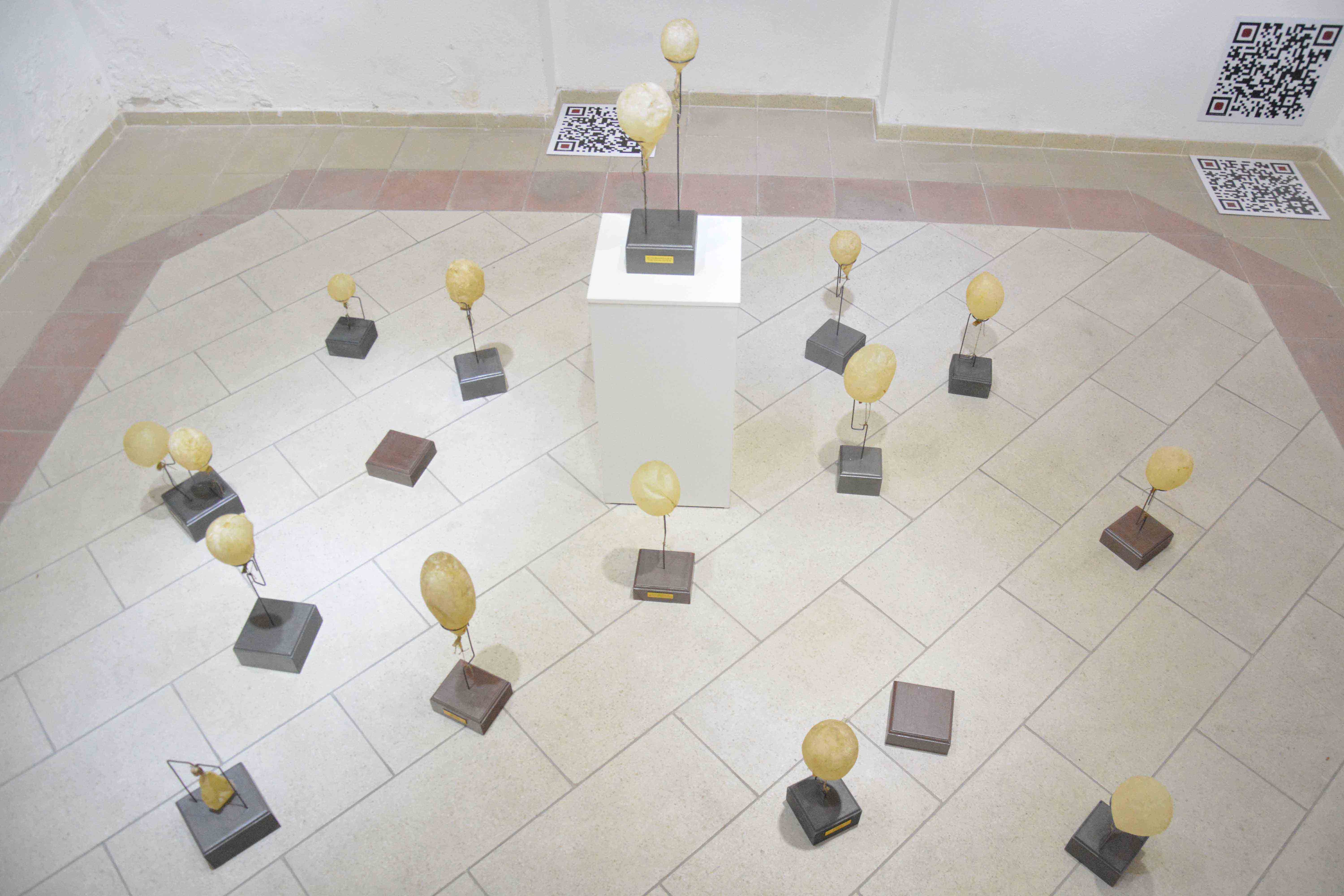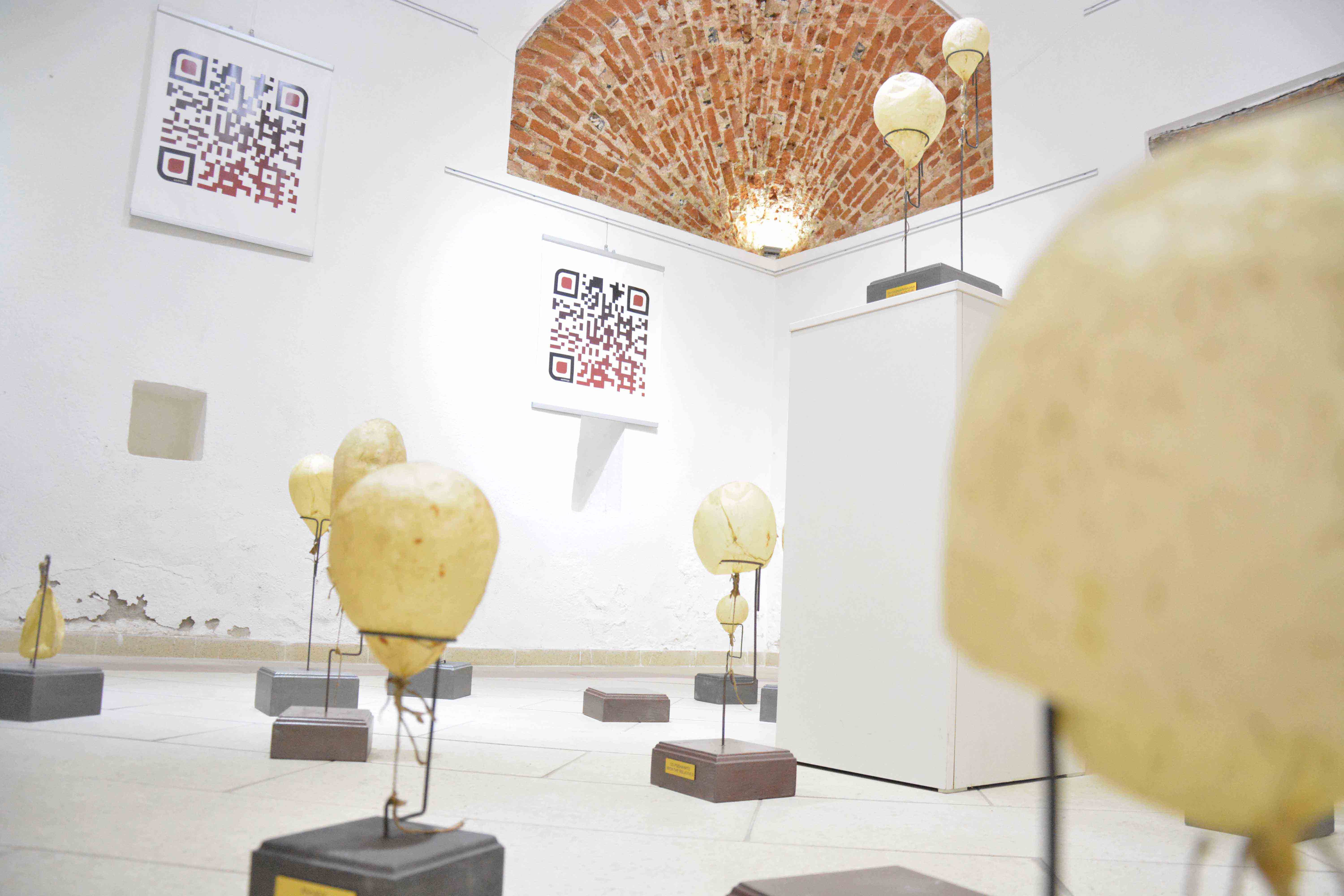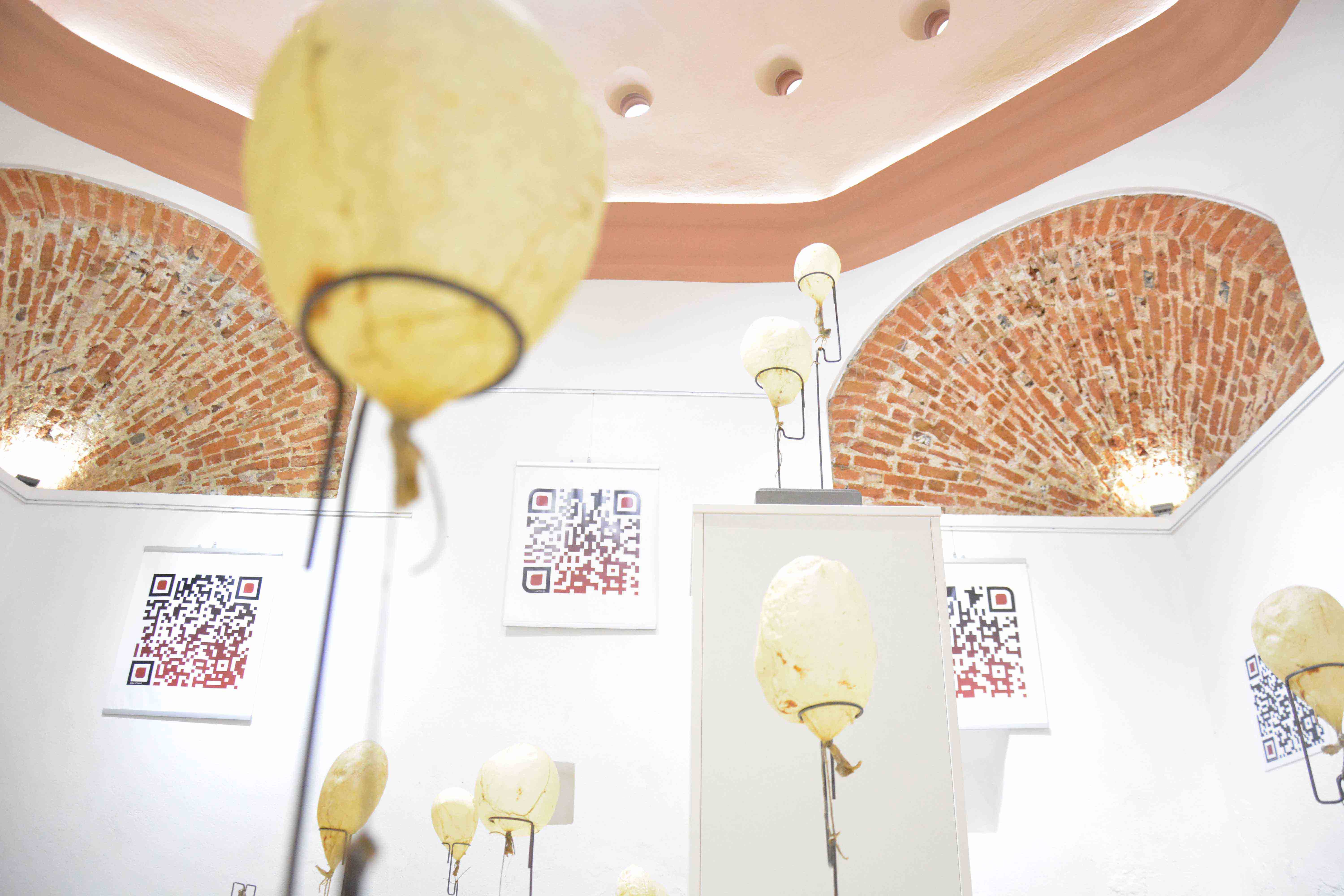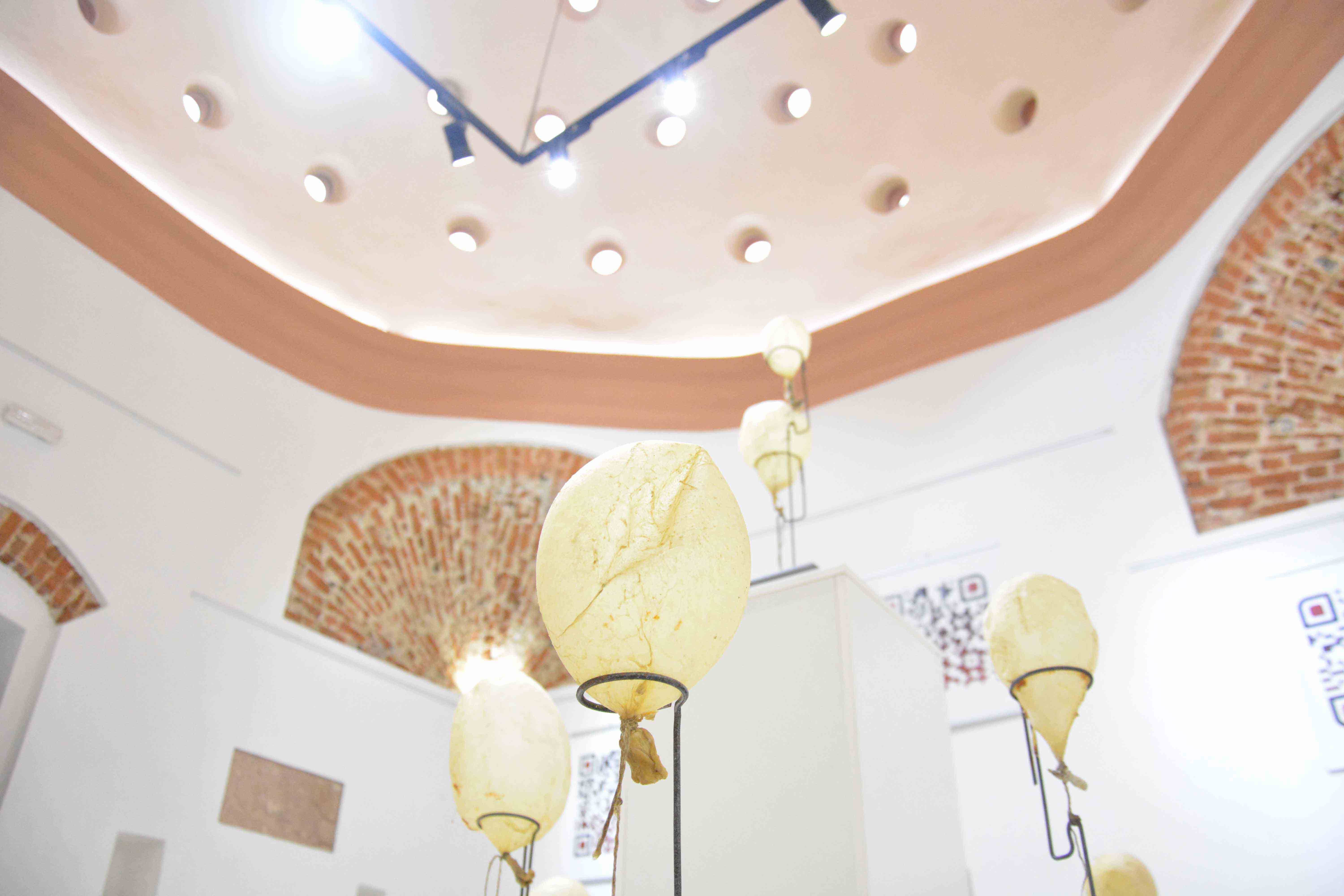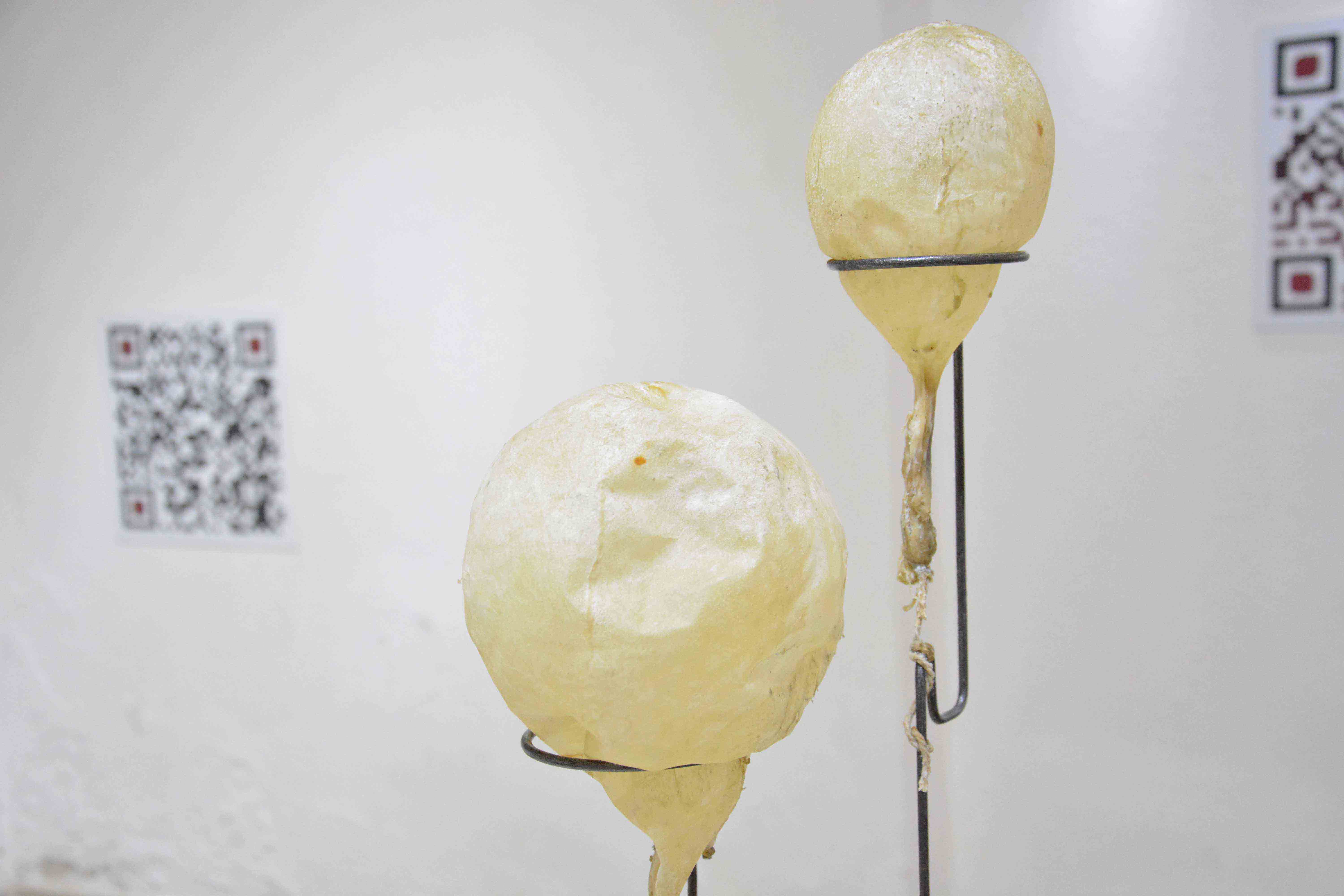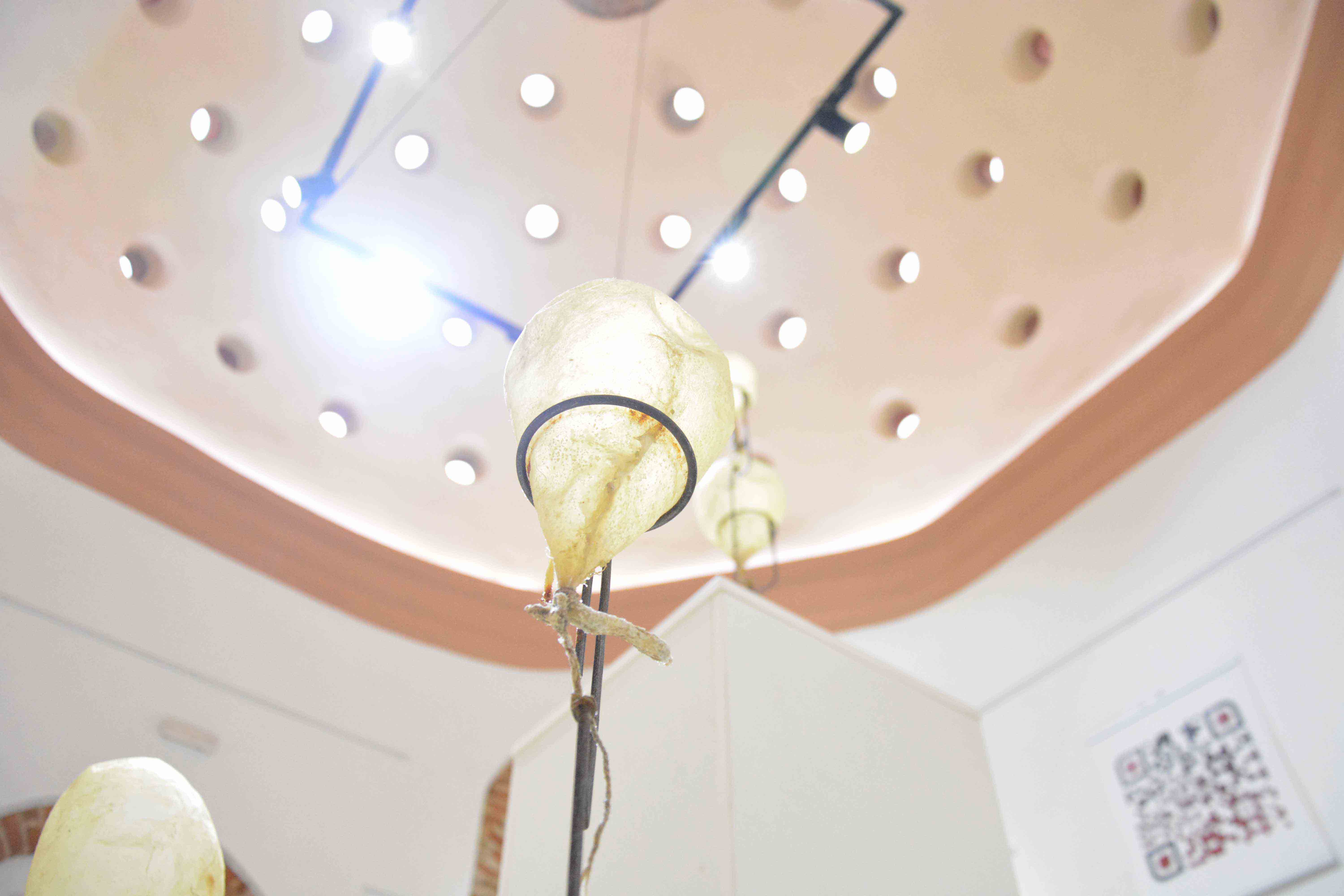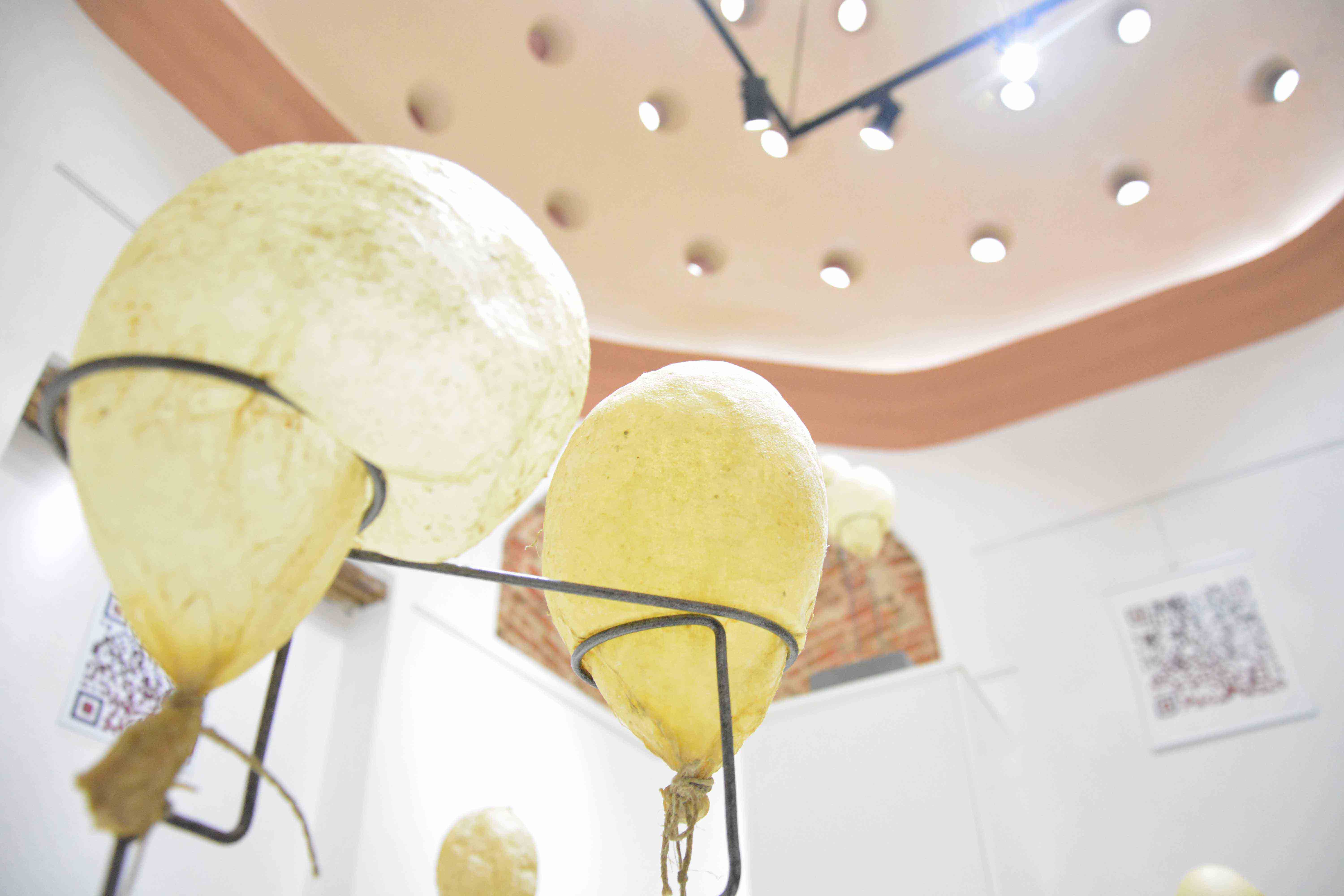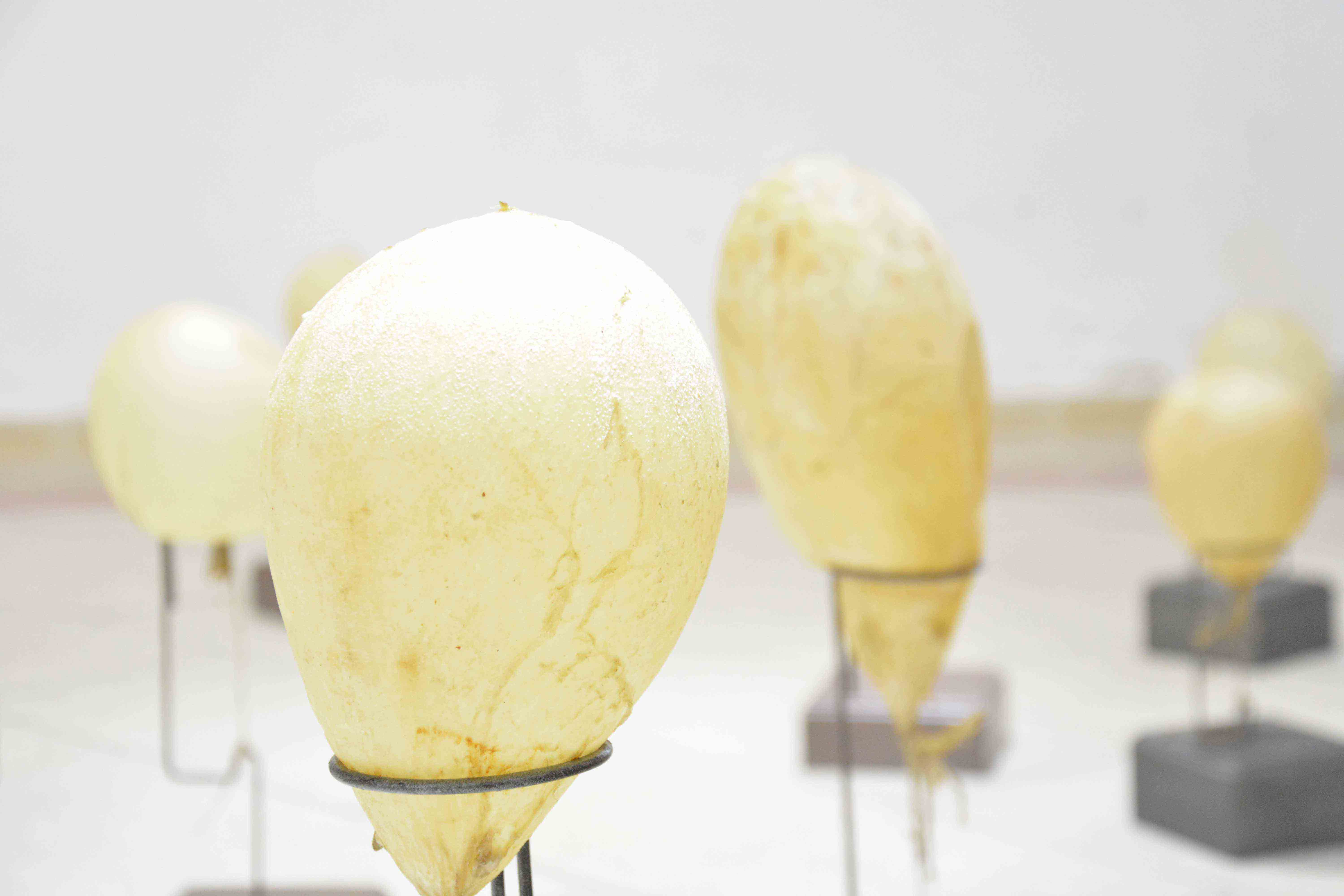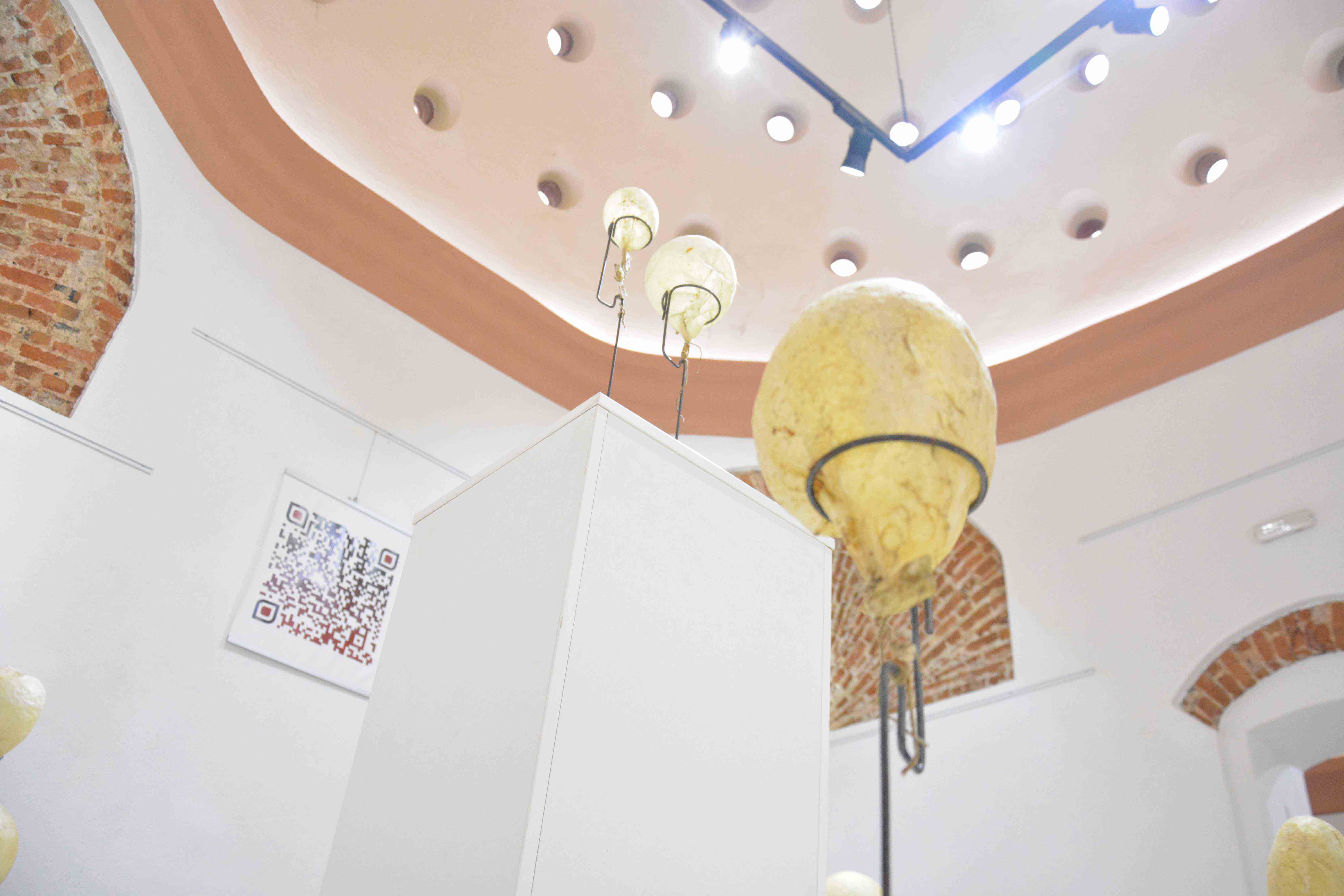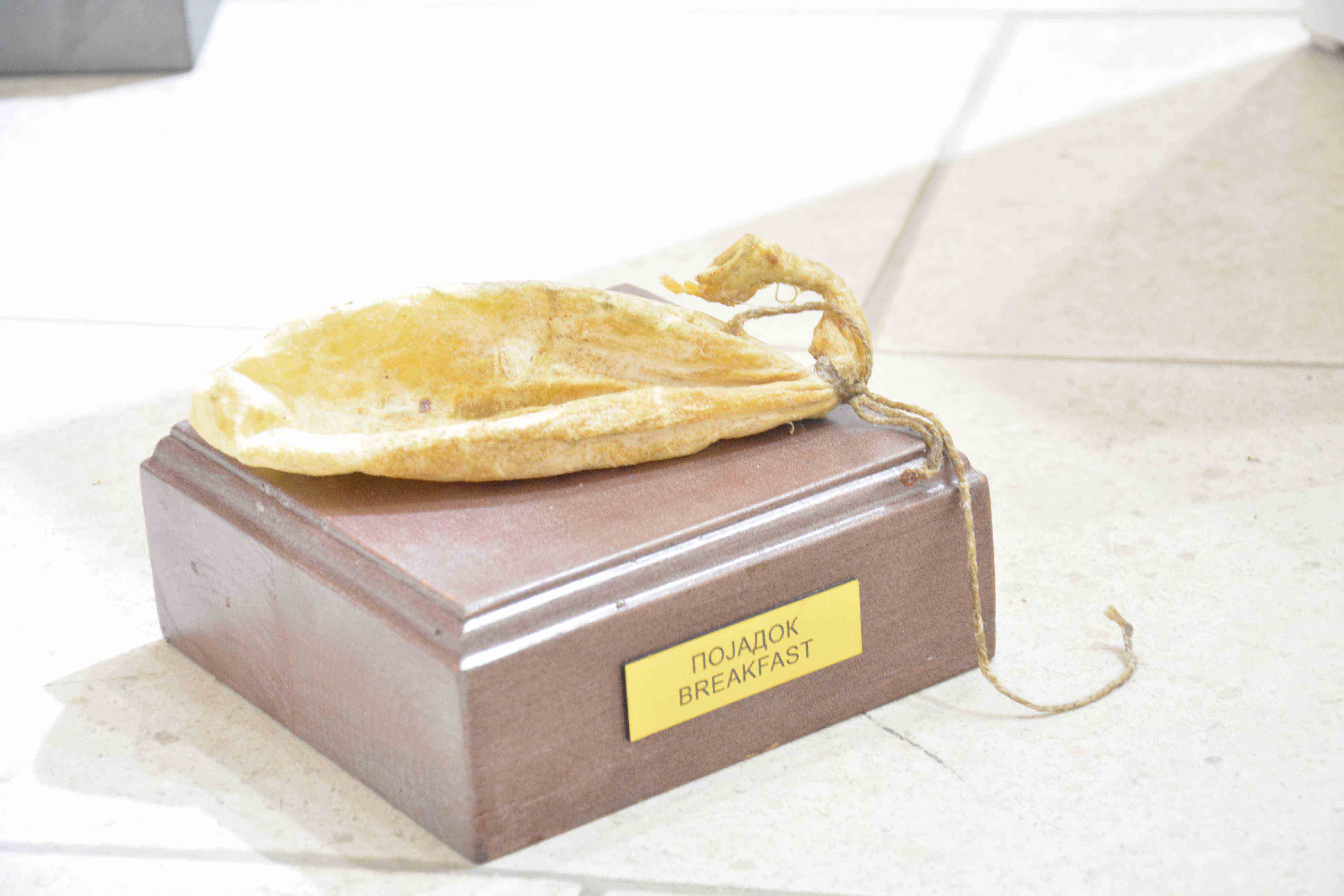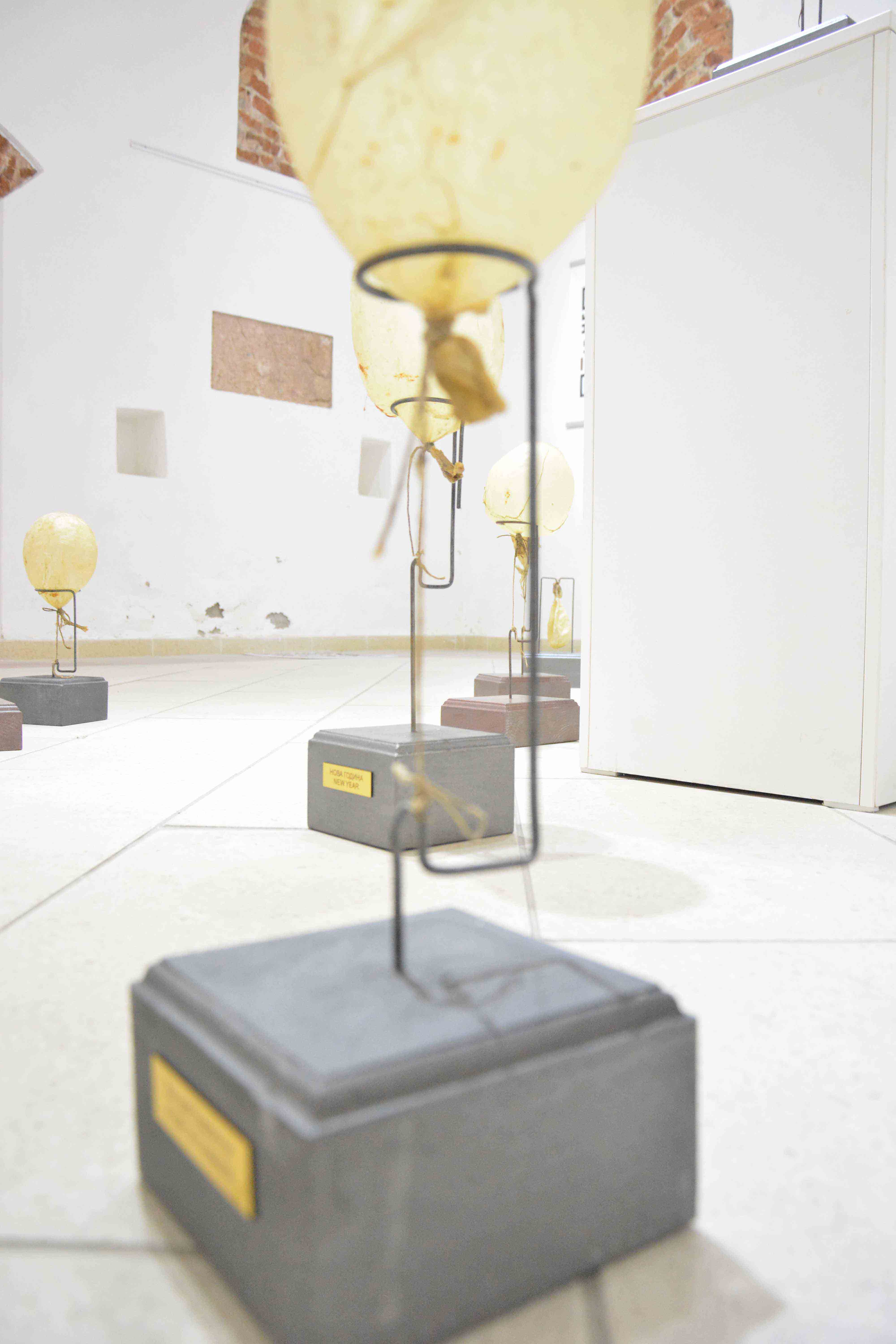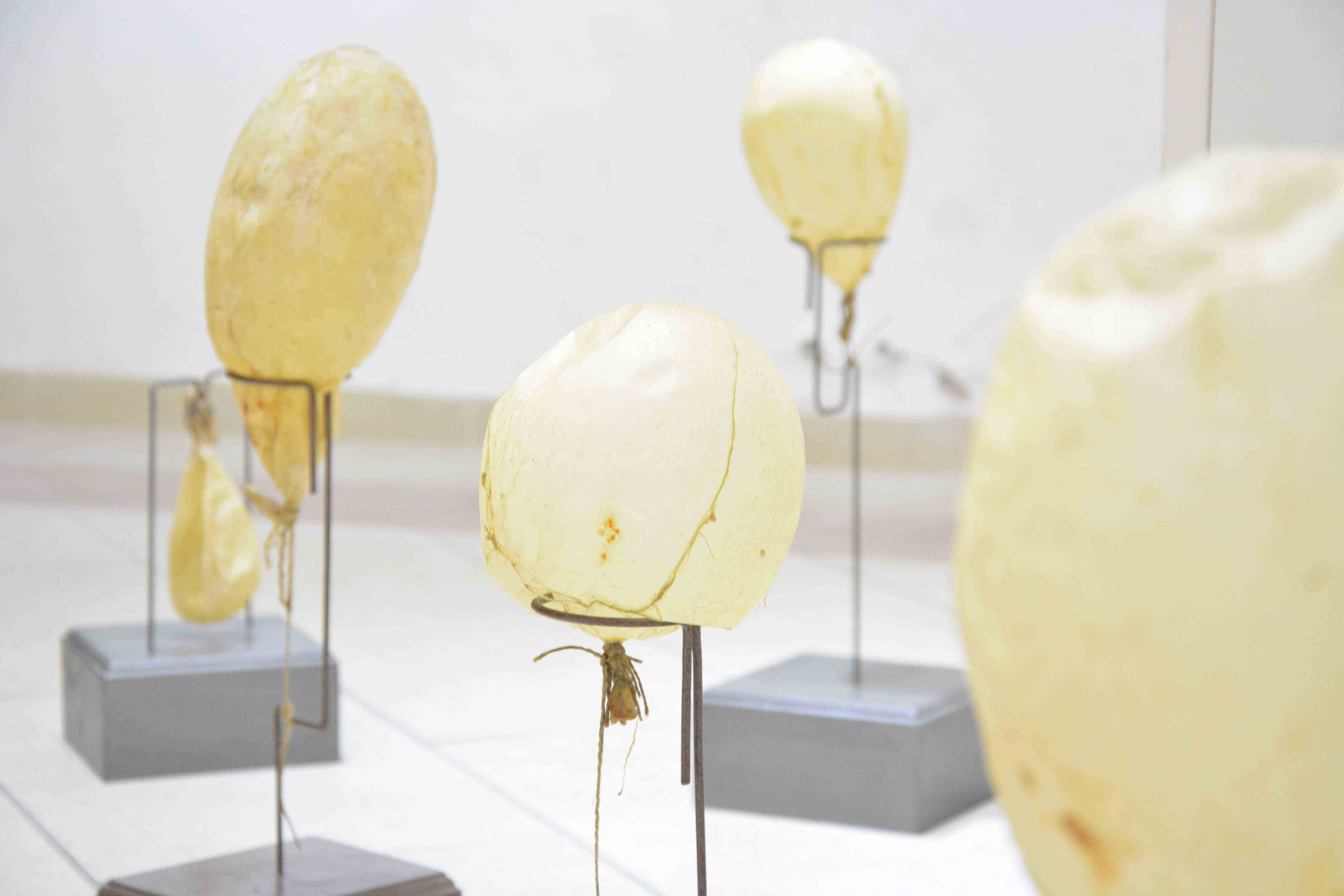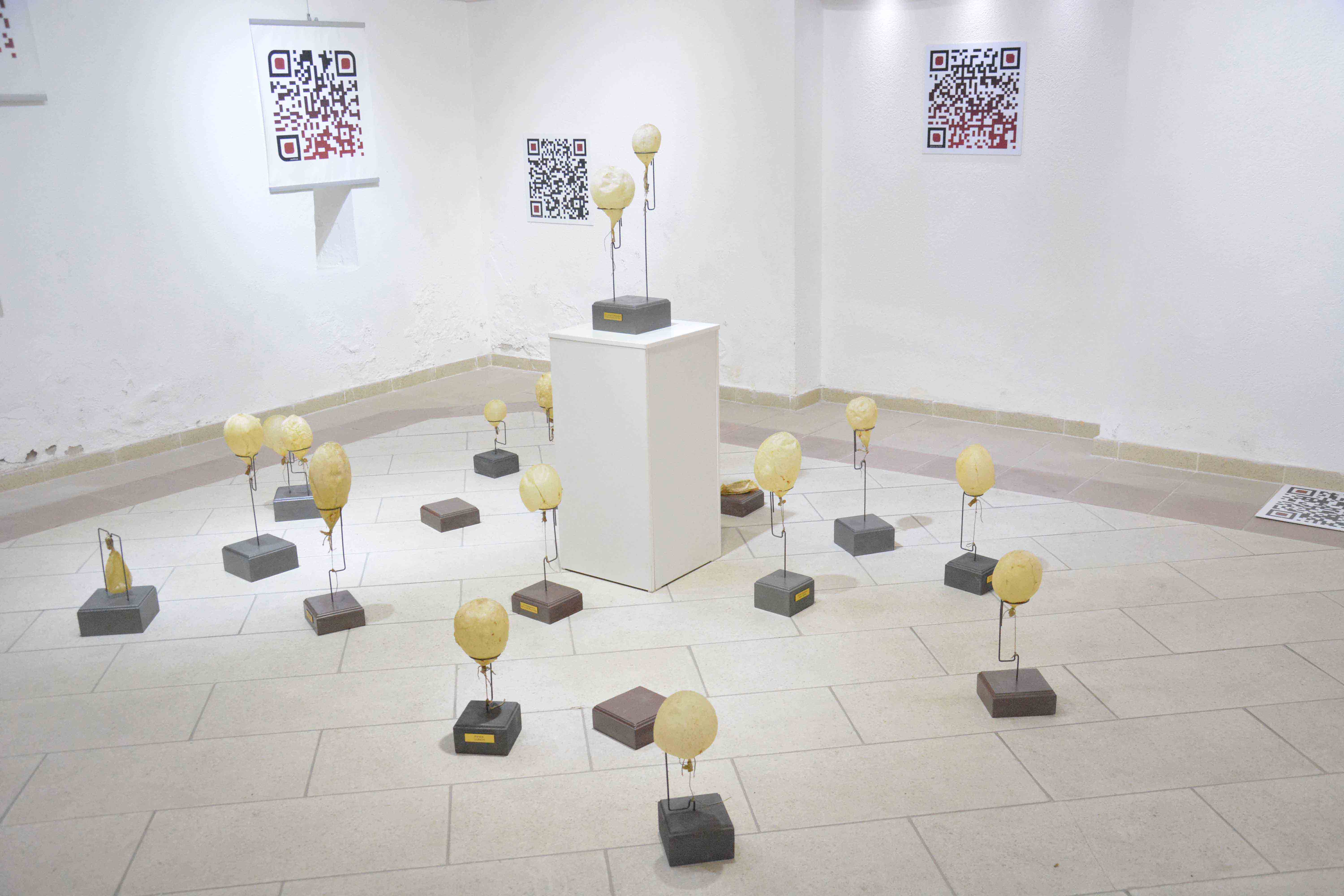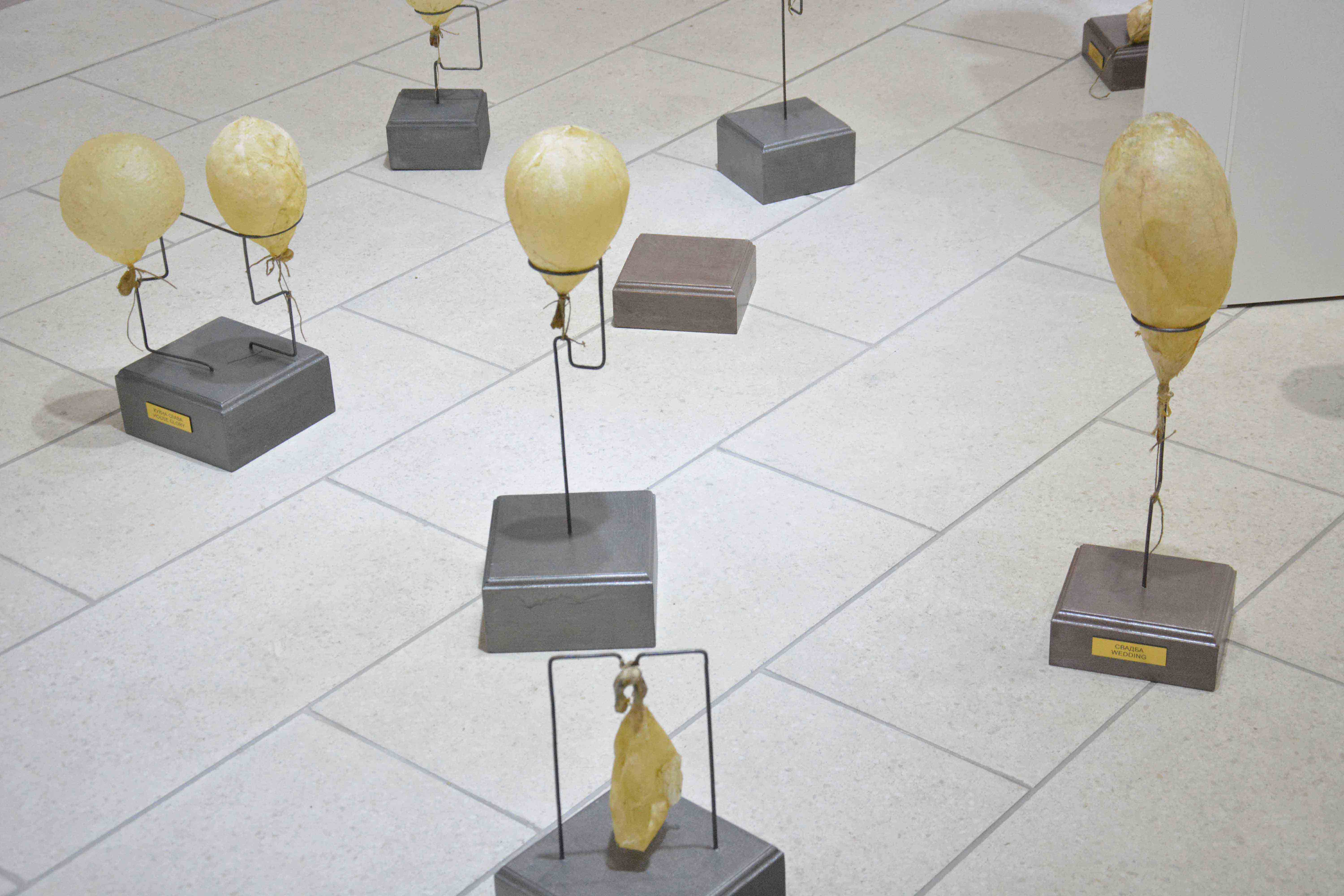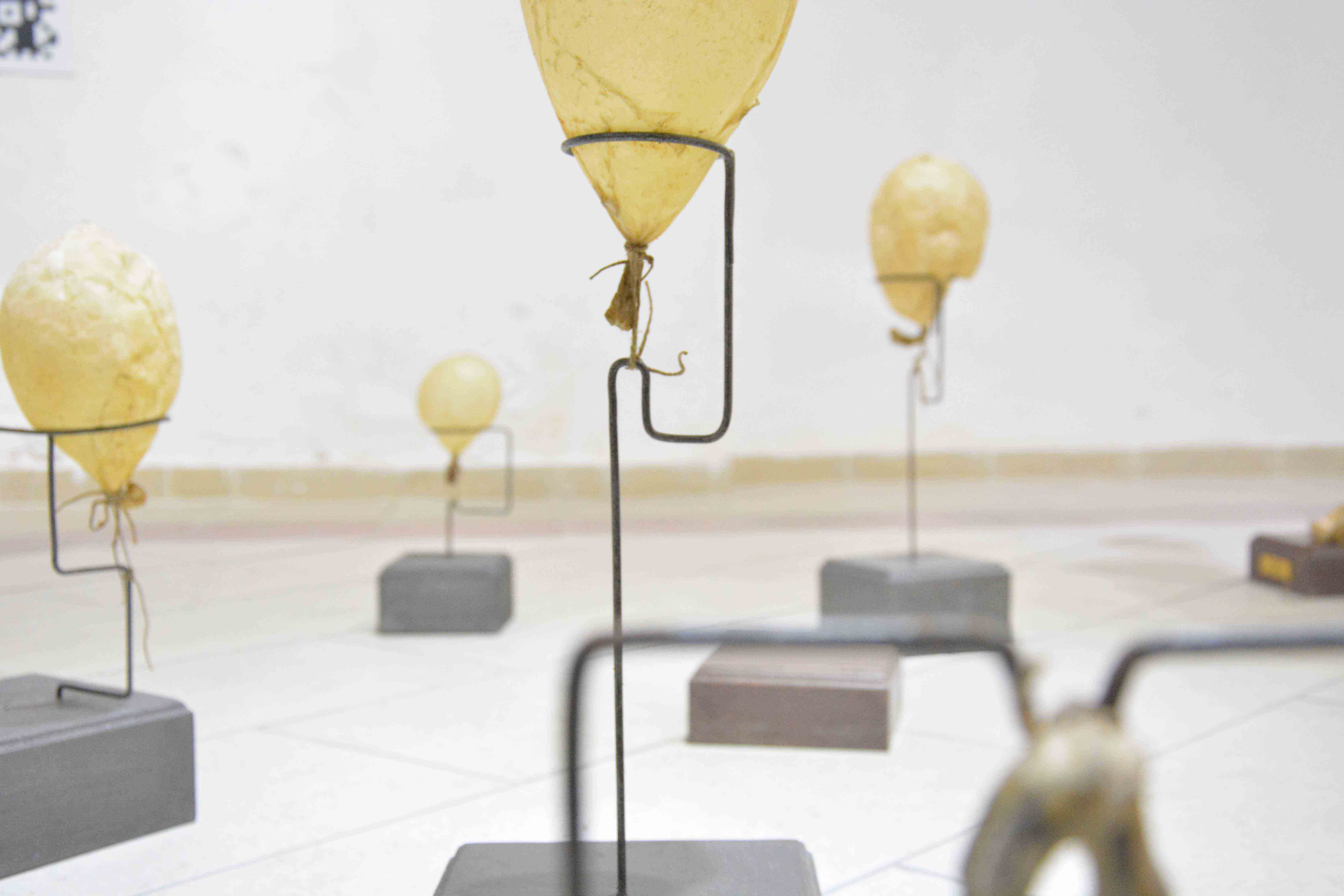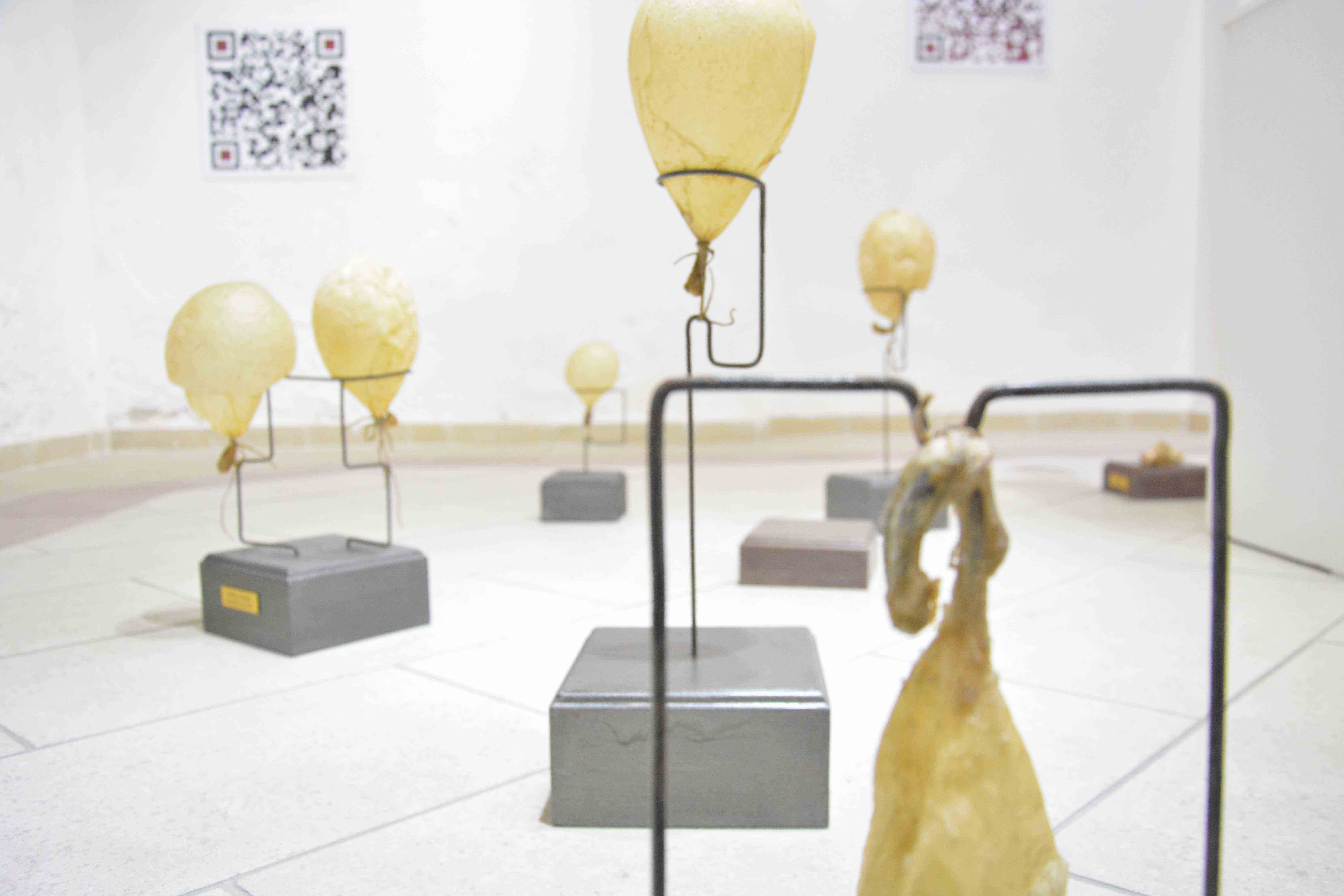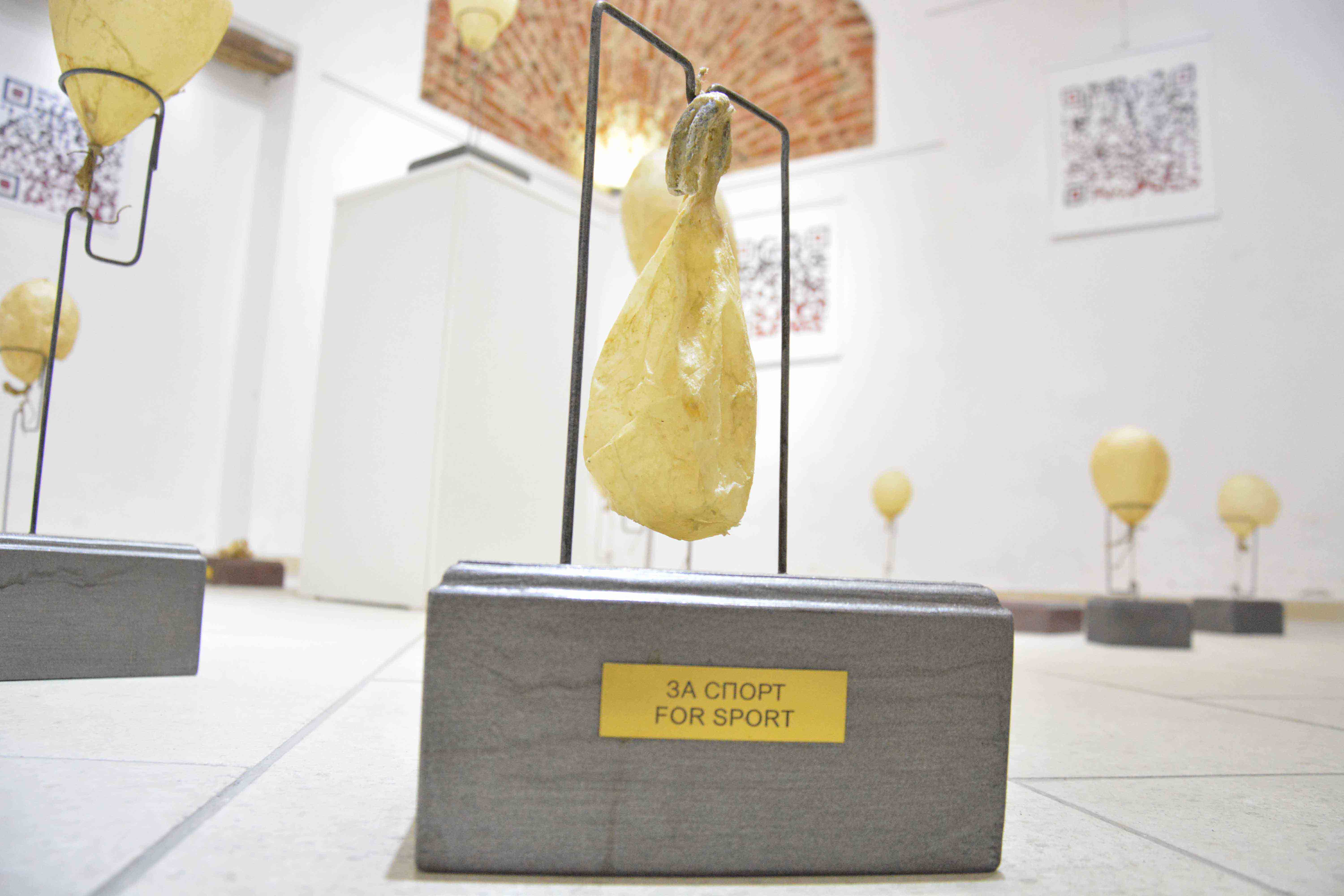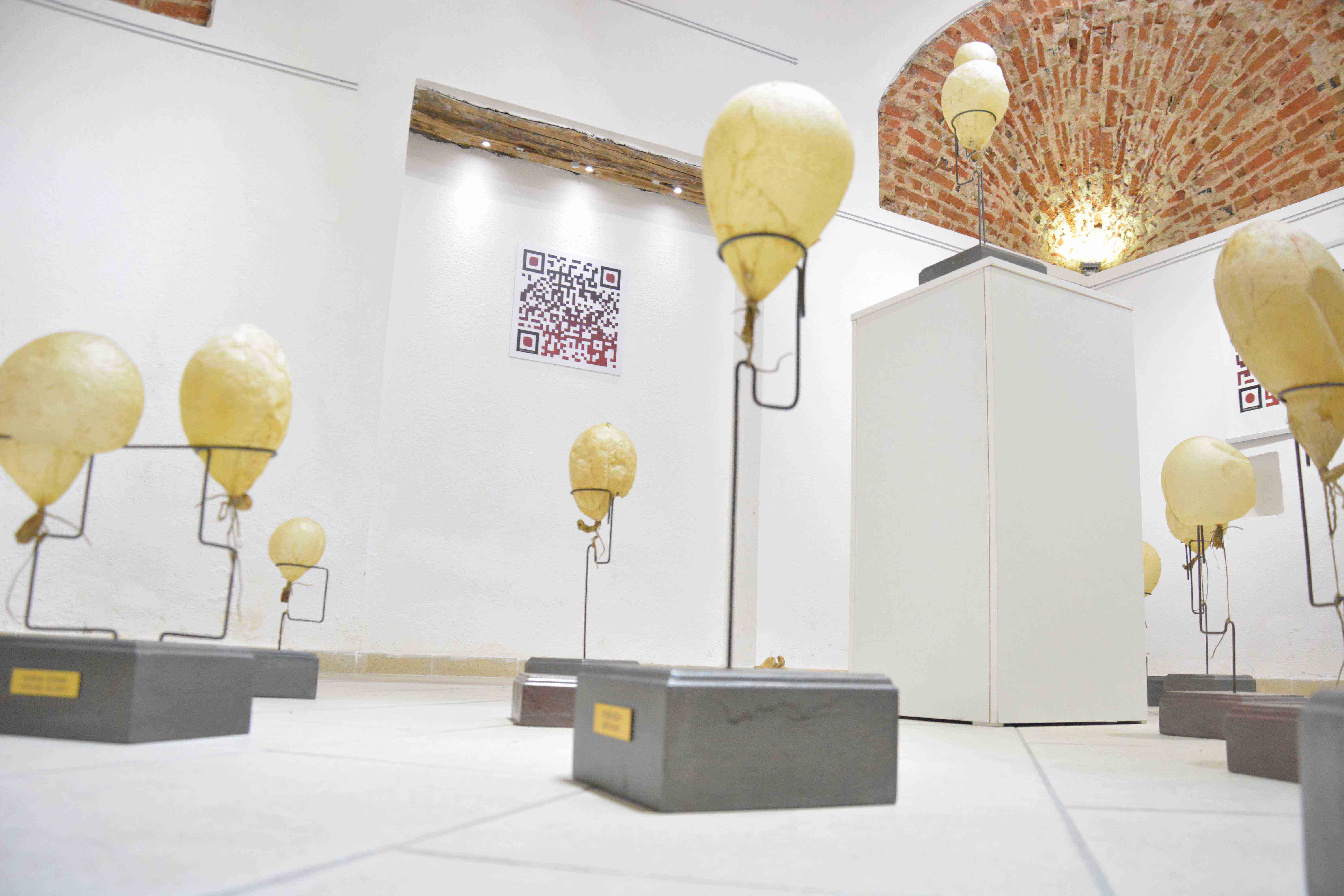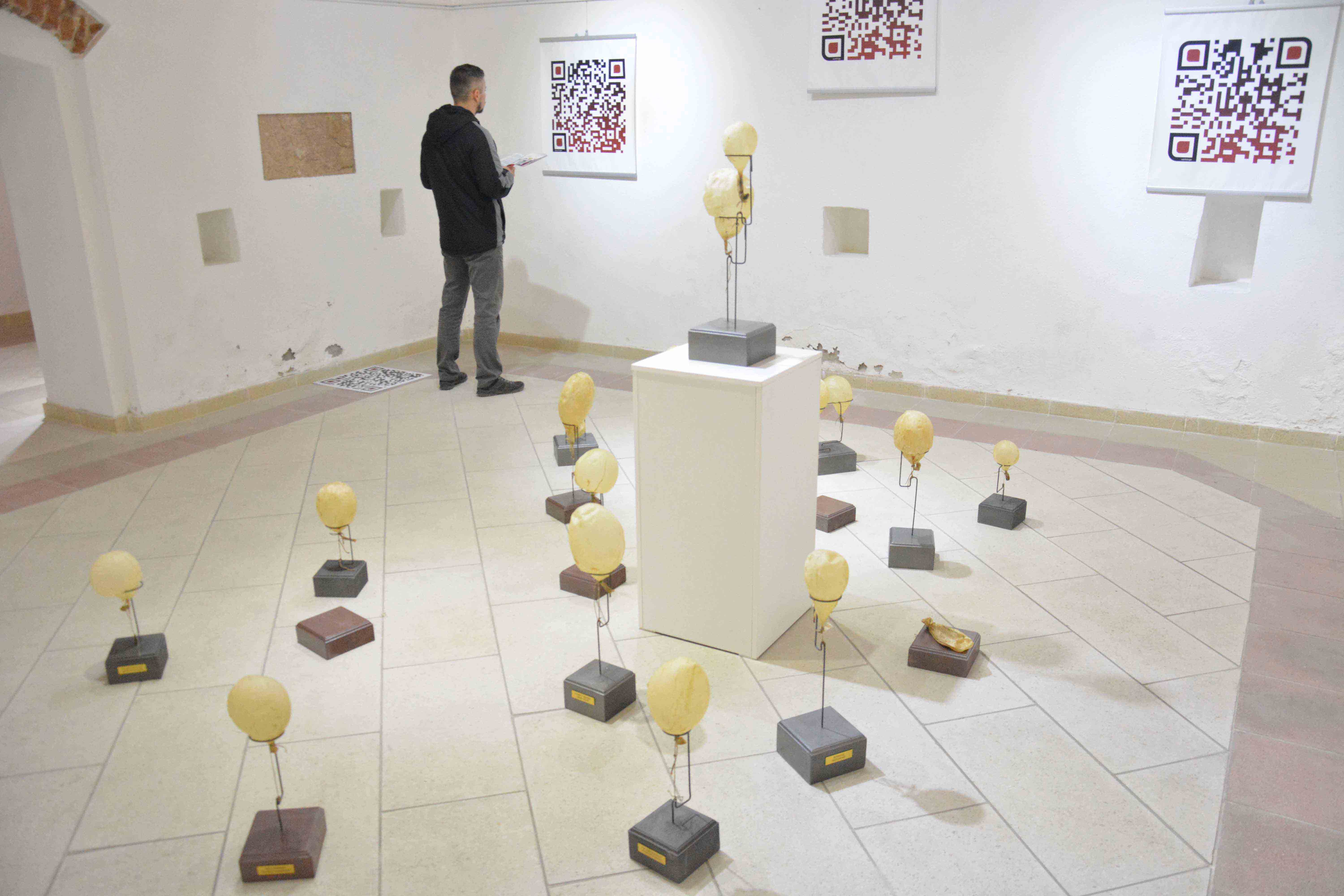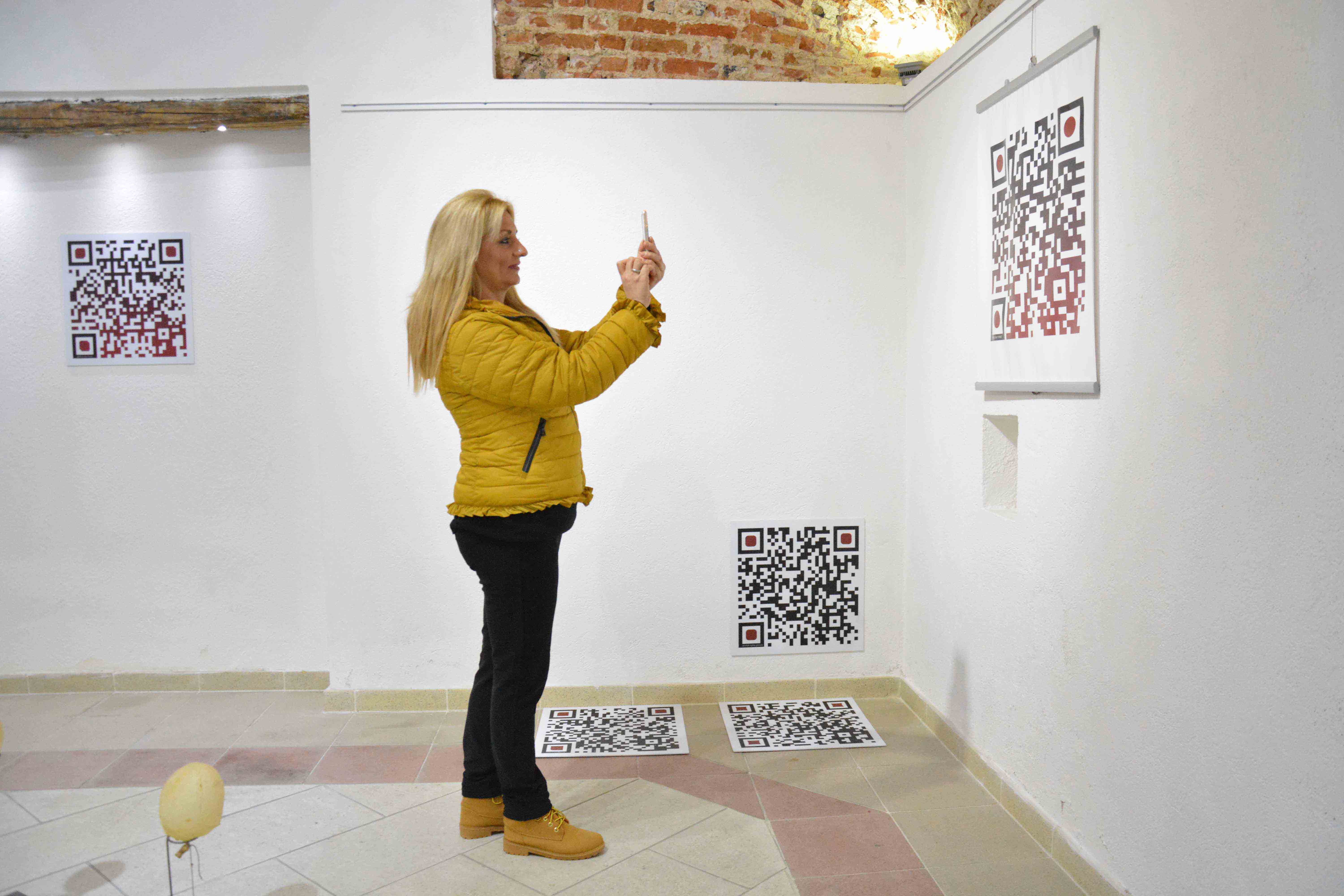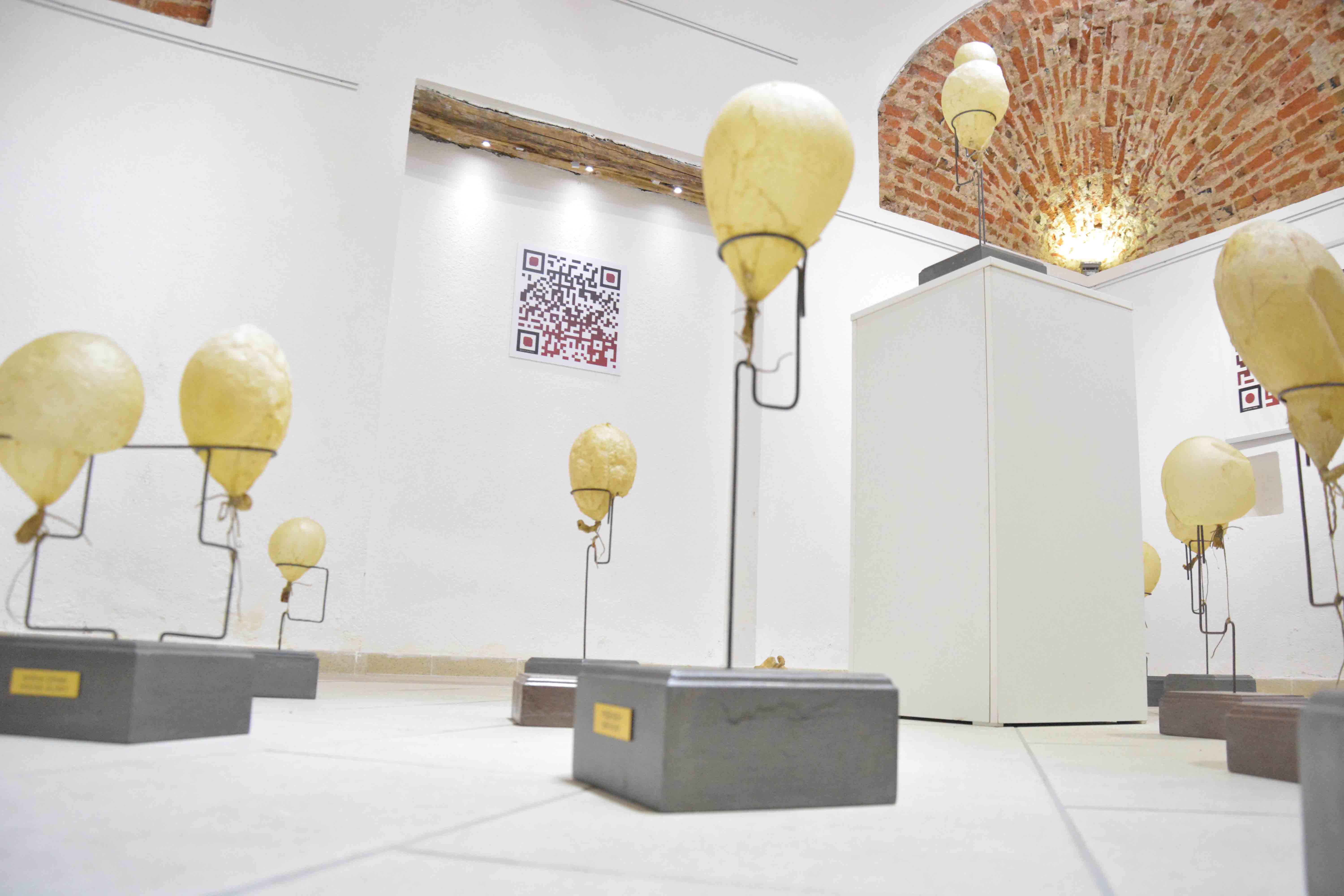“Life as a balloon” is a continuation of the artistic conception that began as an installation with the title “365kg of life”, and continues to complement and transform into different spaces through the showpieces called Bio-balloons. The installation maintains the discourse of activism and political art, which questions the power and the role of art and the artist in society. * Can activism be considered as art? Does one item that served for some utopian society or cause can be at the same time a work of art? Does one item that is not oriented towards art and does not struggle to explore more about her or about itself, can still be considered a work of art? Does these questions that the artist asks himself can be a work of art? However, if all of this remains only as word written on paper, it is most likely to be an essay. Through the installations titled 365 kg, which has a multimedia character, two different visual approaches occur, along with sound vibrations. The installation or the accumulation is a set of the so-called balloons, which as form and subject are always part of the environment where humans celebrate their existence. They are part of the everyday festivities and manifestations, in order to decorate and beautify the area. However, before the transformation process through impregnation and preparation, these balloons were integral part of biological living entity. It is an animal that was forcefully reproduced, tortured, terrorized, and at the end killed, to be offered at the market as product for profit. The balloons are organs, i.e. urinary bladders of animals, with discharged urine, and the inside filled with air. They illustrate an abstract bioform that symbolizes the last breath of life in the animal. Through this balloon form, in a cynical manner the culturological and traditional image of humans is displayed, as the ones who daily terrorize the weaker and voiceless, thus celebrating their life. If we observe this exhibition through the sociological prism, we will surely notice the intention for achieving certain goals and results in society. The current activism is reinforced with several posters, which as visual item аrе pioneers in the creation of the propaganda. These posters contain only software generated android codes in their geometric shapes. The codes can be viewed only through android device that is connected to the internet. The codes contain links to documentary films, web pages, groups, and individuals – activists for sustainable development of the environment. The goal of this event is to encourage the individual to reject the traditional narratives and embedded fear, that he as an individual is powerless. We live nowadays in a consumer society, a system that functions ideally, although, even a kid knows that it is not sustainable. In this consumer system, the consumer, the minor one, the insignificant and powerless one, he has the crucial role in that system. How? He, the consumer has the power to decide what to use and consume daily, thus he decide which industry will exist. Conscious consumer, for sustainable development. And that is culture, though not any kind of. * Pero Kovancaliev, 365kg of Life, NI Center for Culture “Marko Cepenkov” Prilep Read more
Life as a balloon
In the meantime, it is trying to give its own contribution to the context of sustainable development, by focusing on one of the many industries that on a daily basis are in a race for rapid progress. They minimize their expenditures by using brutal exploitation in order to increase the personal profits, and thus leave everlasting consequences at man and the environment.
